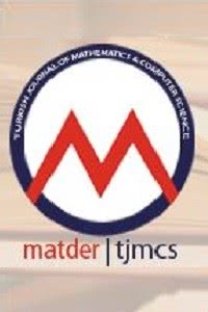A Two-step Hybrid Block Method with Four Off-step Points on Singular Initial and Boundary Value Problems
This work contains the numerical studies of singular initial and boundary value problems of ordinary differential equations. The importance of these problems arose from the recent attentions Mathematicians have drawn to them due to their occurrence naturally and repeatedly in physical models. The numerical solutions to these problems are obtained by a class of block hybrid methods. The behaviour of basis functions differs and as such has an influence on numerically derived methods. Previous studies eulogize the use of a single basis function. This study establishes the advantage of using multiple basis functions as the derived methods combine multiple properties of basis function as this approach improves the stability of the resulting methods. This work combines two basis functions namely: a newly Constructed orthogonal polynomial and shifted Chebyshev orthogonal polynomial for the development of some continuous hybrid schemes in collocation and interpolation technique. To make the continuous schemes self-starting, some block methods of discrete hybrid form were derived. The schemes were analyzed using appropriate existing definitions to investigate their stability, consistency, and convergence. The investigation shows that the developed schemes are consistent, zero stable, and hence convergent. Comparison with the exact solutions and existing methods show that the proposed methods are effective numerical methods for the solutions of singular initial and boundary value problems.
Keywords:
Singular boundary value problems, Orthogonal polynomial, Stability consistence and convergence, hybrid point, basis function,
___
- [1] Abukhaled, M., Khori S. A., Syef A., A numerical approach for solving a class of singular boundary value problems arising in physiology, International Journal Numerical Analysis, 8(2)(2011), 353–363
- [2] Changqing, Y., Jianhua, H., A numerical method for Lane-Emden equations using Chebyshev polynomials and the collocation method, In Proceedings of the 2010 International Conference on Computational and Information Sciences. IEEE Computer Society, Washington, DC, USA, 97–100. DOI=http://dx.doi.org/10.1109/ICCIS.2010.31(2010).
- [3] Hasan, M.K., Huq, M.A., Rahman, M.S., Rahman, M.M., Alam, M.S., An implicit method for numerical solution of second order singular initial value problems, Open Mathematics Journal, 7(2014), 1–5.
- [4] Hasan, Y.Q., Zhu, L.M., Solving singular initial value problems on the second order ordinary differential equations, Journal of Applied Science, 7(17)(2007), 50–58.
- [5] Hasan, Y.Q., Zhu, L.M., Modified Adomian decomposition for singular initial value problems in the second order ordinary differential equations, Survey Math Applied, 3(2008), 183–193.
- [6] Iryna, K., Al-Smadi, M., Arqub, O.A., Momani, S., An efficient analytical method for solving singular initial value problems of non linear systems, International Journal for Applied Mathematics and Information Sciences,2(10)(2016), 647–656.
- [7] Jafari, H., Ahmadi, M., Sadeghi, S., Solving singular boundary value problems using Daftardar-Jafari method, Applications and Applied Mathematics, 7(1)(2012), 357–364.
- [8] Koch, O., Peter, K., Ewa, B.W., The implicit Euler method for the numerical solution of singular initial value problems, Applied Numerical Mathematics, 34(2000), 231–252.
- [9] Kumar M., Singh N., Modified Adomian decomposition method and computer implementation for solving singular boundary value problems arising in various physical problems, Computer Chemical Engineering, 34(11)(2000), 1750–1760.
- [10] Kumar J., Singh R., The Adomian decomposition method with Greens functions for solving nonlinear singular boundary value problems, Journal of Applied Mathematics Computation, 34(2013), 397–416.
- [11] Najafi, H.S., Yaqhoubi, A.R., Non-standard finite difference scheme for solving singular Lane-Emden equation, International Journal of Research in Industrial Engineering, 2(4)(2017), 161–171.
- [12] Ndukum, P.L., Biala, T.A., Jator, S.N., Adeniyi, R.B., A Fourth-order Trigonometric Fitted Method with the Block Unification Implementation Approach for Oscillatory Initial Value Problems, International Journal of Pure and Applied Mathematics, 103(2)(2015), 201–213.
- [13] Ogunniran, M.O., Tayo, O.A., Haruna, Y., Adebisi, A.F., Linear stability analysis of Runge-Kutta methods for singular Lane-Emden equations, Journal of the Nigerian Society of Physical Sciences, 2(2020), 134–140.
- [14] Qu, R., Agarwal R.P., A collocation method for solving a class of singular non-linear two-point boundary value problems, Journal Computer Application Mathematics, 83(1997), 147–163.
- [15] Roul P., On the numerical solution of singular two-point boundary value problem; adomian decomposition homotopy perturbation approach, Journal of Math Methods Application Science, 40(18)(2017), 7396–7409
- [16] Roul P., Doubly singular boundary value problems with derivative dependent source function: A fast converging iterative approach, Journal of Math Methods Application Science, 42(2018), 354–374.
- [17] Shiralashetti, S.C., Deshi, A.B., Mutalik, P.B., Haar Wavelet collocation method for the numerical solution of singular initial value problems, Ain Shams Engineering Journal, 7(2016), 663–670.
- [18] Wazwaz, A.M., A new algorithm for solving di erential equation of Lane-Emden type, App Math Comput.,118(2001), 287–310.
- [19] Wazwaz, A.M., Adomian decomposition method for a reliable treatment of the Emden-Fowler equation, Applied Mathematics and Computation, 61(2005), 543–560.
- ISSN: 2148-1830
- Yayın Aralığı: Yılda 2 Sayı
- Başlangıç: 2013
- Yayıncı: MATEMATİKÇİLER DERNEĞİ
Sayıdaki Diğer Makaleler
SÜLEYMAN ŞENYURT, Kebire Hilal AYVACI, Davut CANLI
Hermite-Hadamard Type Inequality for s-Convex Functions in the Fourth Sense
(k,m)-type Slant Helices According to Parallel Transport Framein Euclidean 4-Space
Modeling Covid-19 Infection Cases and Vaccine in 5 Countries Highly Vaccinations
Kadir KARAKAYA, Aynur Yonar, Harun Yonar, Mostafa Abotaleb, Tatiana Makarovskikh, Pradeep Mishra, Amr BADR
Hatice TAŞÇI, Serkan GÖNEN, Mehmet Ali BARIŞKAN, Gökçe KARACAYILMAZ, Birkan ALHAN, Ercan Nurcan YILMAZ
Some Results on the Oscillatory Behavior of Integro-differential Equations
Hermite-Hadamard Type Inequalities Related to s-Convex Functions in the Third Sense
